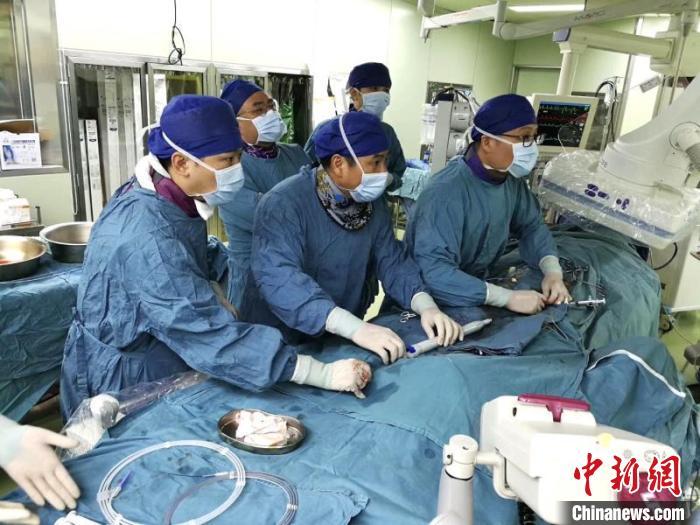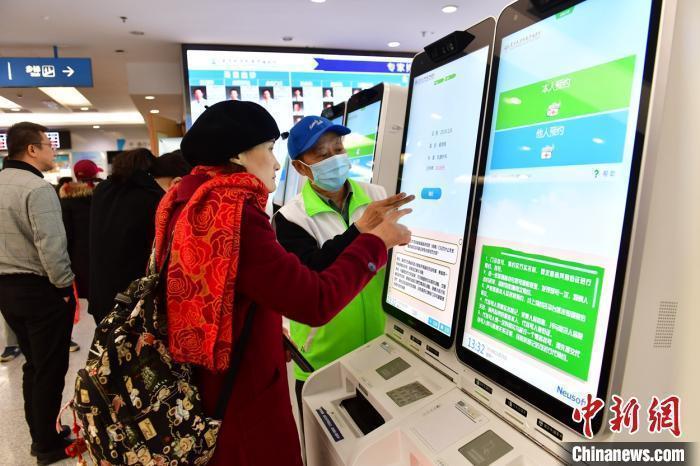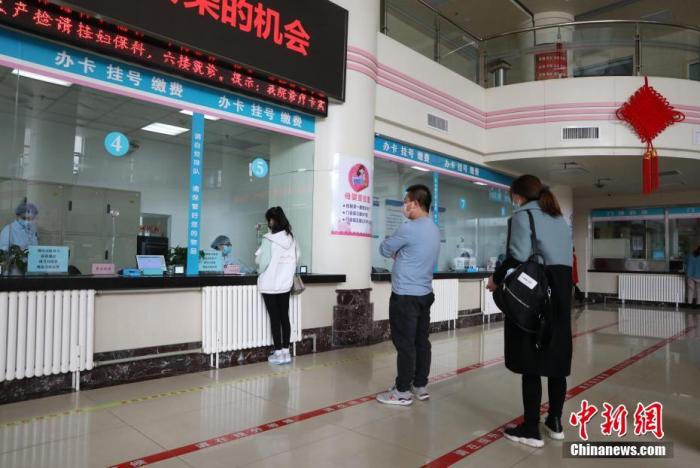Beijing, Nov. 12 (Reporter Zhang Ni) Recently, the opening of high-value medical consumables in China has aroused great concern. The price reduction of coronary stents exceeded 90%, which made many patients applaud. At the same time, at present, all localities are also actively forming purchasing alliances to "hold the group to bargain". After the normalization of the government’s "soul bargaining", how much money can ordinary people save in the future?

Data map: The doctor performed surgery for the patient (the picture has nothing to do with it). Photo courtesy of Xinhua Hospital
Open the "group purchase" mode of high-value medical consumables in many places
The average price dropped from 13,000 yuan to 700 yuan. Recently, the first batch of coronary stents purchased by the state in a centralized way offered a "floor price". Compared with 2019, the average price reduction of the same product of the same enterprise reached 93%.
The curtain of high-value medical consumables "National Mining" has aroused widespread concern, and what is coming is finally here!
According to the introduction of the National Medical Insurance Bureau, 2,408 medical institutions participated in this collection, and the intended purchase volume in the first year reached 1.07 million. It is expected that patients all over the country will use the selected products after the national centralized purchase price reduction in January 2021.
In fact, in addition to the sharp price reduction of heart stents, the local level has begun to actively "group purchase" for high-value consumables, and the prices of some high-value medical consumables have dropped by more than 50% on average. It just confirms the previous voice in the industry — — High-value consumables "4+7" will only be late, but will not be absent.
For example, in Jiangsu, a provincial sunshine procurement alliance consisting of 157 tertiary public medical institutions in the province has been established before, and three rounds of group alliance centralized procurement have been carried out successively.
The above procurement involves six categories of cardiac stents, coronary balloons, primary replacement artificial knee joints and thousands of specifications, with an average decrease of more than 50% and the highest decrease of 86.4%.
Hainan also played a combination boxing to promote the centralized procurement of medical consumables. In addition to participating in the centralized procurement of coronary stents organized by the state, the province also organized the procurement of consumables such as intraocular lenses, coronary balloons and COVID-19 test reagents.
Taking intraocular lens as an example, at the end of last year, Hainan Province participated in the inter-regional joint procurement of intraocular lens in provincial alliance public medical institutions. Compared with the original procurement price, the selected price dropped by 85%, with an average drop of 44%.
In addition, earlier, the medical security bureaus in Beijing, Tianjin and Hebei also signed the Framework Agreement on Centralized Procurement of Medical Consumables in Beijing, Tianjin and Hebei, aiming at comprehensively promoting the centralized procurement of medical consumables in Beijing, Tianjin and Hebei.
It can be seen that active group procurement in various places will become a normal operation.

Data Map: A patient uses the face recognition system to reserve an expert number under the guidance. Photo by Wang Guangzhao
Calculate the account! How much can "group buying" save the people?
The high prices of drugs and medical consumables have always been one of the crux of the expensive medical treatment for ordinary people. From drugs to consumables, the core goal of quantity procurement is to squeeze out the price "moisture" and let patients use drugs and medical consumables at a lower price.
Then, how much money has been saved by the "quantity for price" national centralized purchasing? Numbers are the most intuitive.
For example, from this month, the third batch of countries organized centralized drug procurement.
According to Zhong Dongbo, director of the Department of Pharmaceutical Price and Bidding and Purchasing of the National Medical Insurance Bureau, according to static calculation, the centralized collection of three batches of drugs can save about 53.9 billion yuan nationwide. According to the 40% paid by ordinary people, it will probably save 21.6 billion yuan. At the same time, medical insurance saves money, and by expanding the medical insurance reimbursement drug list and improving the reimbursement level, the people can get more benefits.
Previously, in addition to drugs, the voices of all parties for high-value medical consumables to return to reasonable prices have also been strong.
Taking the coronary stents collected this time as an example, the data show that the interventional therapy of coronary heart disease in China has developed rapidly. From 2009 to 2019, the number of cases has grown from 230,000 to more than 1 million, with an annual growth rate of 10%-20%. At present, the price of coronary stents used in medical institutions ranges from thousands to tens of thousands of yuan, which makes patients bear a heavy burden.
In this centralized purchase, the intentional purchase volume in the first year reached 1.07 million. According to the intended purchase volume, it is estimated to save 10.9 billion yuan.
From the local level, the "alliance bargaining" between regions has also seen tangible results.
For example, Hainan’s participation in the cross-regional joint procurement of intraocular lenses is expected to save Hainan Province 25 million yuan in medical insurance funds.
The centralized procurement of group alliances in Jiangsu is expected to save about 1.5 billion yuan.

Data Map: Photo by Yang Di, a reporter from China News Service in the outpatient hall of a hospital.
Say goodbye to "supporting doctors with consumption", can doctors’ sunshine income increase?
Data show that the market size of medical consumables in China is 320 billion yuan, including 150 billion yuan of high-value medical consumables. Behind the huge market scale, it is that "medical care by consumption" exists in public medical institutions all the year round.
This centralized procurement is an important step in the reform of high-value consumables. It is generally believed in the industry that the management of high-value consumables will be all-round in the future.
In fact, as early as July 2019, the General Office of the State Council issued the "Reform Plan for Managing High-value Medical Consumables".
The document emphasizes "rationalizing the price system of high-value medical consumables, improving the whole process supervision and management of high-value medical consumables, purifying the market environment of high-value medical consumables and the practice environment of medical services, and supporting domestic high-value medical consumables with independent intellectual property rights to enhance their core competitiveness", which means that the state should conduct all-round governance in terms of price, supervision, market and service.
In addition, it is worth mentioning that the above plan has clearly put forward the idea of "canceling the addition of medical consumables in public medical institutions" and realizing the "zero difference rate" sales of medical consumables in all public medical institutions by the end of 2019.
On September 1st of the same year, the Measures for the Administration of Medical Consumables in Medical Institutions (Trial) jointly issued by National Health Commission and the State Administration of Traditional Chinese Medicine was officially implemented.
In terms of procurement, the Measures particularly emphasize that the procurement of medical consumables should be managed in a unified way, and medical institutions above the second level should designate specific departments as the management departments of medical consumables, and other departments or departments should not engage in procurement activities.
High-value consumables will be purchased in quantity, and DRG (grouped according to disease diagnosis) will be paid for, so the profit of supply chain will be thinner and thinner, and the gray interest chain between enterprises and medical institutions will also be cut off.
However, the collection and landing will inevitably move some people’s "cheese." How to mobilize the enthusiasm of medical staff to participate in the reform of high-value medical consumables is very important.
In fact, the solution to this problem is involved in the "Reform Plan for Managing High-value Medical Consumables".
The document proposes to speed up the establishment of a salary system that conforms to the characteristics of the industry. Implement the requirements of "allowing medical and health institutions to break through the current wage control level of public institutions, allowing medical service income to deduct costs and withdraw funds according to regulations to be mainly used for personnel rewards" and improve the salary distribution policy.
In the "Measures for the Administration of Medical Consumables in Medical Institutions (Trial)", it is also clear that the purchase and use of medical consumables should not be used as the basis for the economic distribution of departments and personnel, and improper economic benefits should not be sought in the purchase and use of medical consumables.
In the opinion of experts in the industry, a series of reforms will also promote the transformation of hospital development model, change the current extensive mode of supporting medicine with medicine and supporting medicine with consumption, thus improving the hospital’s refined management ability and changing the hospital’s economic power and operation mode.
In addition, there are also voices that in the next medical system reform, we should not only straighten out the price system of high-value medical consumables or drugs, but also straighten out the value of intermediate services in the medical system. While reducing the price of consumables or drugs, we should reflect the value of knowledge and the labor value of medical staff more.